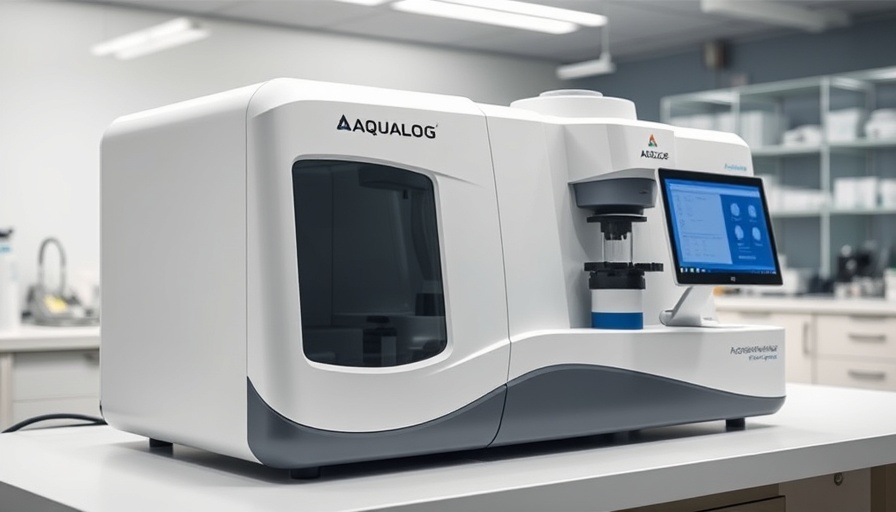
Revolutionizing Water Research: HORIBA's New Spectrometer
In an era where clean water accessibility is a global concern, HORIBA has launched its fifth-generation Aqualog spectrometer, setting a new standard in water research technology. This sophisticated tool is designed to provide researchers with unprecedented insights into water quality, making it essential for environmental studies, quality control processes, and various industrial applications.
The Importance of Advanced Water Analysis
Water quality is crucial for public health and ecosystem sustainability. The Aqualog spectrometer enables comprehensive analysis of water samples, identifying pollutants and organic materials that can pose risks to both human health and the environment. By delivering precise spectral data, it assists scientists in understanding complex water interactions, a key factor in tackling global water scarcity challenges.
Key Features of the Aqualog Spectrometer
This fifth-generation model features enhanced sensitivity and speed, allowing for real-time measurements of water samples. Innovative LED-based light sources improve measurement accuracy, while the system's robust design caters to diverse field conditions. Researchers can use this portable system without sacrificing data integrity, ensuring reliable results even in remote locations.
Market Implications and Future Trends
For CEOs and marketing managers within tech-driven industries, the implications of such advancements extend beyond environmental concerns. Enhanced water quality analysis can improve manufacturing processes, thereby reducing waste and increasing efficiency. Companies focusing on sustainability can leverage these insights to align with the growing consumer demand for environmentally responsible practices.
Counterarguments: The Challenges Ahead
Despite the promising capabilities of the Aqualog spectrometer, the integration of advanced technology into existing systems poses challenges. Many businesses are hesitant to invest in new technologies due to existing budget constraints and the potential need for retraining staff. Moreover, the shift towards automation raises questions about the balance between technical efficiency and human oversight in research practices.
Building Partnerships for Successful Implementation
Businesses must prioritize building partnerships with technology providers to ensure smooth transitions to new systems. Collaboration between researchers, engineers, and business leaders will foster innovation and pave the way for future advancements. Sharing insights can lead to even broader applications of this technology across various sectors.
Conclusion: Taking Action Towards a Sustainable Future
As we continue to face global water challenges, the launch of HORIBA’s fifth-generation Aqualog spectrometer signifies a critical step forward in water research. Business professionals and leaders in technology-related fields are encouraged to embrace such innovations, champion sustainable practices, and ensure their companies are contributing to a cleaner, safer global environment.
 Add Row
Add Row  Add
Add 




Write A Comment